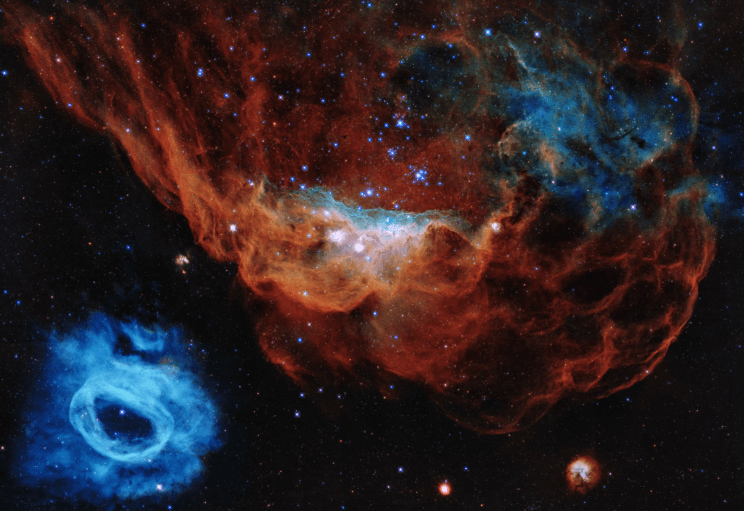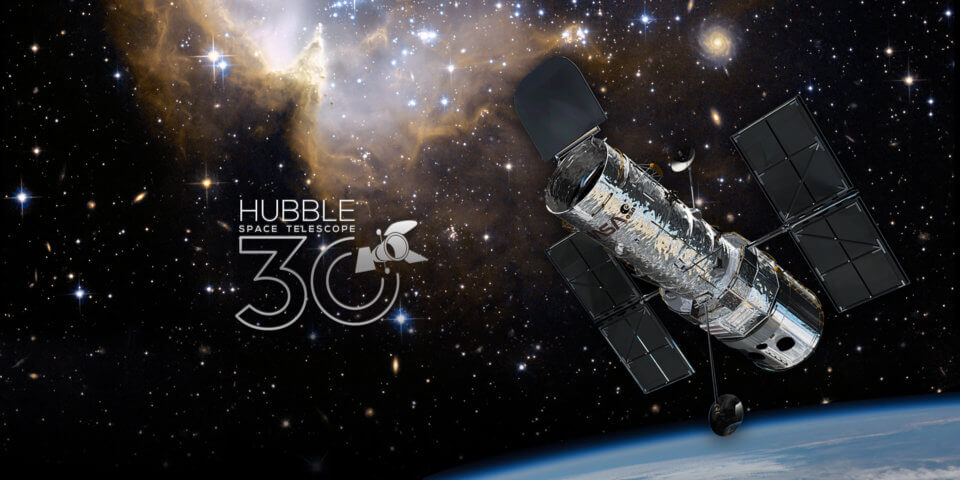On April 24, 2020, NASA’s Hubble Space Telescope celebrated the 30th anniversary of its launch aboard Space Shuttle Discovery. The Saint Louis Science Center was selected as one of a limited number of locations across the nation to unveil the Hubble 30th anniversary photo to the public and is the only location in the state of Missouri.
The image will be displayed on a celebratory banner at the Science Center when the building reopens, allowing visitors to view the image up close.
A full list of national unveilings, as well as downloadable resources and a gallery of Hubble’s most iconic images, are available at https://hubblesite.org/hubble-30th-anniversary.
The Cosmic Reef

Touch/Click image for higher resolution.
Full Res 17043 X 11710 PNG 483 MB
The Cosmic Reef, Hubble 30th Anniversary Image
Credit: NASA, ESA, and STScI
During its lifetime, the Hubble Space Telescope has captured stunning imagery and groundbreaking data that have shown us how and where stars are born within clouds of gas. It is far from a peaceful process.
The Hubble image shown above reveals how young, massive, energetic stars sculpt and illuminate their birthplace with powerful winds and searing ultraviolet radiation. The image is nicknamed the “Cosmic Reef” because it resembles an undersea world.
NGC 2014 & NGC 2020
The large, red nebula (NGC 2014) and its smaller blue neighbor (NGC 2020) are part of a vast star-forming region in the Large Magellanic Cloud, a satellite galaxy of the Milky Way.
The sparkling centerpiece of NGC 2014 is a grouping of bright, hefty stars, each 10 to 20 times more massive than our Sun. The stars’ ultraviolet radiation heats the surrounding dense gas. The massive stars also unleash fierce winds of charged particles that blast away lower-density gas, forming the bubble-like structures seen on the right.
The blue areas in NGC 2014 reveal the glow of oxygen, heated to nearly 20,000 degrees Fahrenheit by the blast of ultraviolet light. The cooler, red gas indicates the presence of hydrogen and nitrogen.
By contrast, the seemingly isolated blue nebula at lower left (NGC 2020) has been shaped by a solitary mammoth star. This young, massive star, called Wolf-Rayet, has ejected its outer layers of gas, exposing its searing-hot core, making it roughly 200,000 times brighter than our Sun.
A Stellar Nursery
Star-forming regions generally last tens of millions of years. Star birth in this region appears to have just started, with a robust episode of newly formed stars about 5 million years ago.
The star-birth process is the same throughout the universe. Though most stars have lower masses, it is the rare massive stars, through their strong winds and energetic radiation, that shape these stellar nurseries.
This image celebrates Hubble’s 30 years of exploring the heavens.
For more information on the Hubble Space Telescope visit, Hubble’s Greatest Hits: 30th Anniversary or HUBBLESITE.
Credits: NASA, ESA, and STScI









